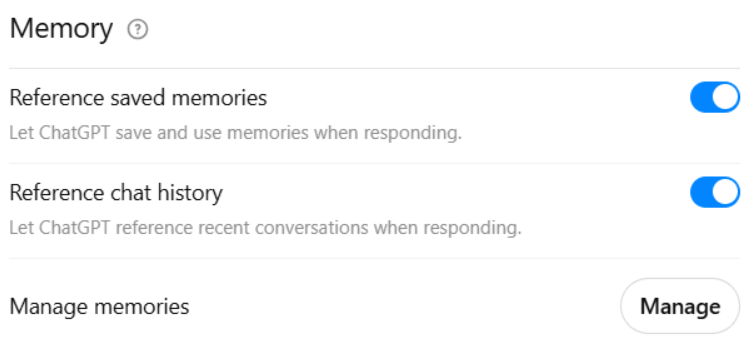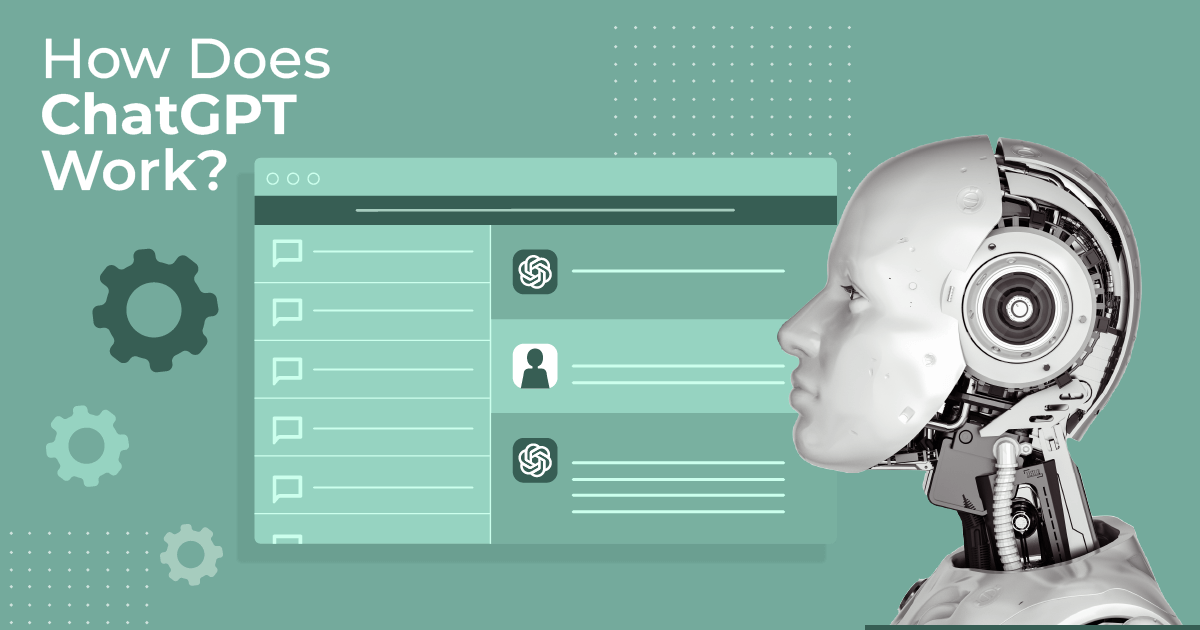
How to Use AI in Marketing Without Changing Your Brand’s Voice
Remember the last time you used AI to refine a marketing asset and something felt a bit off? Perhaps you thought, “That doesn’t sound like our brand at all!”
The fact that you noticed is your ace up your sleeve. It means your ear for your brand’s unique voice is finely tuned.
AI is a valuable tool for marketers. But let’s be honest: without best practices and precautions, it can lead to generic, uninspired content that lacks the personality, subtle tone, and emotional resonance that defines your brand.
The worst part? Your customers and prospects might start feeling that disconnect, too.
In this guide, we’ll share how to guard your brand identity using strategic and practical tools. You’ll learn how to make the most out of AI without losing the voice that makes your brand yours.
Craft better email campaigns with AI
Use AI-powered copywriting and segmentation to stand out in your subscribers’ inboxes.
Start freeAI & Brand Voice: Potential Limitations
While AI offers new opportunities to create brand assets faster and understand your audience better, it also introduces specific challenges, including:
- Brand authenticity loss: AI can generate content that’s correct but lacks the essential spark and authenticity your brand needs to stand out.
- Lack of human resonance: It struggles with human creative processes, like adding relevant humor, originality, or breaking down abstract concepts.
- AI-generated biases: There’s a risk of AI suggesting ideas or wording that are insensitive or susceptible to biases and stereotypes.
- Disparate AI models: Integrating data from different AI tools can complicate efforts to maintain brand consistency across marketing touchpoints.
- Intrusive personalization: Overanalyzing information in a non-compliant way can raise serious data privacy and ethical concerns.
Sometimes, those limitations appear so subtly that it’s hard to spot them. The good news? You can take actionable steps to manage them.
Maintaining Your Brand’s Voice With AI: Best Practices
Ready to reduce the potential costs of AI’s blind spots? Learn top practical tactics marketers use to resolve them:
1. Understand and outline your brand’s voice
The first step to keeping your brand safe from AI trailblazers is understanding your brand’s voice in depth. This process doesn’t happen overnight. If your business has been operating for years, your voice has likely evolved over time, shaped by multiple factors, like your target market and interactions with your customers.
Map your brand voice the same way you treat Ideal Customer Profiles (ICPs) and buyer personas. Ask yourself questions like:
- Is your voice empathetic or bold, soft or provocative?
- What impression do your slogan and mission statement make on your target audience?
- What words and phrases do you use to create the right impact?
Create guidelines with examples from different marketing channels and brand assets. Use them to keep everyone aligned in your team and review them regularly to ensure relevance as your brand evolves.
Then, you can build a dedicated AI brand style guide with use cases and best practices. For example, you can include approved vs non-approved phrases and on-brand vs off-brand images. The more detailed you are, the better.
You can also share a few effective ready-to-use AI prompts with your team to ensure that the output aligns with your brand’s voice:
“Generate three social media captions (for Instagram, LinkedIn, and TikTok) announcing our new blog post. Our brand voice is witty, casual, and empathetic. We use pop references and emojis. We avoid jargon and passive voice. Ensure the tone is fun and optimistic.”
Check out this detailed guide to learn how to build great prompts and customize them based on your needs:
2. Research AI tools
Not all AI tools work the same when it comes to safeguarding your brand identity. When choosing the best AI platform for your business, focus on niche tools that can pick brand assets from your website and enable customization.
But what type of capabilities can secure that?
First, choose an AI tool that lets users feed and train it with content. For instance, they let you upload your key blog posts or social media archives to understand your unique identity, tone of voice, and storytelling style.
Some advanced platforms can also learn directly from brand-stylistic guides as well. Include the sentence styles you prefer, average paragraph length, emoji usage, terms you avoid, and other brand elements it can learn from.
Are you managing different accounts and brand styles? Seek AI platforms that allow you to load different brand and content styles and easily switch from one to another. So, if you own an agency or large organization with sub-brands, that’s an essential feature.
Finally, make sure that your go-to AI tools easily integrate with your existing stack. After all, you resorted to AI to simplify your processes and workflows. Not to mess them up.
3. Train AI with your content
You’ve mapped your brand’s voice and chosen the right AI tool for your business. Now, it’s time to start training it to understand your voice; just as you would with a new team member.
Begin by inputting your tone of voice documentation. Mention your target audience, industry, and specific writing nuances, like the phrases you often use and those you strictly avoid. Insert some of your favorite, high-performing content pieces – blog posts, social media updates, email newsletters – to give the AI concrete examples of your desired tone and style.
Once AI has absorbed your initial data, perform some quick experiments. Ask it to:
- Repurpose this copy for different channels without altering your core voice.
- Produce a new blog post on a similar topic, written in your brand’s specific style.
- Rewrite this post in a different format or slightly adjusted tone of voice (e.g., more casual) to test its flexibility and commitment to instructions.
Successful AI training, much like human learning, requires consistent feedback loops. When reviewing AI-generated content, specify what needs refinement. Highlight which parts hit the mark and which miss it with clear arguments.
Also, ensure this feedback is provided frequently to maintain your tone of voice over time. Remember, practice makes perfect for AI, too. The more you guide it, the better it becomes at simulating your unique brand identity.

Finally, remember that AI tools do not always keep a record of your chat history. Check on your tool settings to see what’s available and set it up based on your preferences.
4. Create clear AI documentation
As recent studies show, AI can inspire but cannot fully replace human creativity. AI lacks the sparks created by authentic human interactions, lived experiences, and emotional intelligence. While it offers incredible potential for our work processes, when people lead, teamwork still makes the dream work.
So, while assigning marketing and branding assets to AI is tempting, remember that humans are still in charge and should continue to be – at least in the near future.
Train people on how to use AI effectively and responsibly through clear documentation. Define when it’s best to use it or skip it entirely. For example, advise your teammates to resort to it for brainstorming, generating ideas, where it can really speed up processes and shine.
Ask them to be cautious when producing long-form content. Editors and human readers can spot lack of originality, insight, and repetitiveness better than AI. Moreover, search engines might penalize your content if it looks spammy or low-quality, so avoid crossing that line.
You can also assign AI duties to certain employees to regularly review and refine AI processes. Make them your go-to contacts for AI-related issues, allowing you to learn faster about potential problems and resolve them proactively before they arise.
5. Add human touch to AI outputs
Robotic content pushes readers and search engines away, as it usually comes across as boring or inauthentic. That’s why humanizing AI-generated content that will be shared or published online and offline is essential.
Let’s say you’ve asked AI to produce copy for your next newsletter. How can you make it sound more human? Check out these best practices:
- Adopt a conversational tone: Write in a way that resembles natural speech. Feel free to start some sentences with “But” or “So” just like you would when talking. Also, sprinkle in humorous references if your tone allows it.
- Add imperfect phrases: Human language is not perfect; it has quirks, emotions, even sentence fragments. If it fits your brand’s voice, mimic these traits by adding rhetorical questions or casual phrases that sound more natural.
- Include personal stories: From creating personas that mirror your customers’ pain points and wins to sharing your own experiences, add a personal touch to make your content more relatable.
- Spark engagement: Create moments in your storytelling where readers can react or reflect. Ask questions, run quick quizzes, or appeal to their emotions to encourage participation and deeper connection.
Let’s try to add these four elements in the next test to see the result with a sample exercise. Can you spot the differences?
AI output
“Digital marketing encompasses all marketing efforts that use an electronic device or the internet. It leverages various online channels like search engines, social media, email, and websites to connect with current and prospective customers. This approach allows businesses to analyze real-time data, optimize campaigns for better performance, and tailor messages to specific audiences.”
Edited version
“So, what exactly is digital marketing? It’s pretty much all those marketing efforts that happen online or on a device. I remember when I first started dabbling with online ads for a little side project years ago; it was amazing to see how quickly you could get your message out there, connecting with people through search engines, social media, email, and even just your own website. It’s truly incredible how you can instantly see what’s working or doesn’t and tweak things on the fly to make sure you’re really talking to the right people.”
6. Power up your personalization efforts
AI can help you optimize your marketing personalization tactics. First, it helps you analyze complex data to find patterns and identify your main customer segments based on shared characteristics.
Next, you can use AI to target each segment with the right messaging without altering your core brand voice. For instance, it’s wise to send different emails to VIP customers compared to first-time purchasers. These distinct customer journeys have unique needs and preferences, and AI can significantly help in finding and catering to them.
As you collect more data, remember to review it regularly to spot potential shifts. Consumer trends and customer needs evolve rapidly, and staying ahead of the curve is key to stand out.
Remember that hyper-personalization can sometimes feel intrusive. Find that “silver lining” between relevance and invasiveness before you hit “Send” or “Publish.” It could be timing, messaging, or both at the same time.
Nevertheless, all personalization efforts should be defined by strong ethical guidelines. Always check for biases and insensitive language in your AI’s output and operate with respect.
7. Refine your workflows
Can AI help you tackle daily challenges and enhance your marketing productivity and work routines? Yes – if it’s done the right way.
Let’s explore that way: First off, explain your current processes, including the tools you use and how responsibilities are distributed within your team. Next, clearly outline your pain points and common challenges in your industry. Then, ask AI for its input.
You can either work with AI to map out a completely new strategy plan or focus on a specific area, such as the digital transformation of your department. Ask questions like: What new tech platforms can we use? What training is needed? What outcomes can we expect from these initiatives?
Again, don’t take anything AI produces for granted. Use its suggestions for brainstorming and then see how those ideas can be elevated by real humans to design a more effective workday – benefiting both your employees and your customers.
Be the AI Leader, Not Its Assistant
At the end of the day, it’s vital to remember that AI is a powerful tool designed to extend our capabilities, not replace them. Your human intuition, creativity, and strategic vision remain the compass.
So, embrace AI, integrate it wisely, and let it empower you to reach new marketing heights, always with your hand firmly at the helm.



 Published by
Published by

